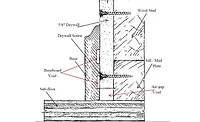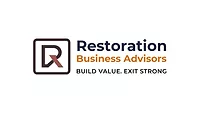Roles for Adjusters, Consultants, and Technical Advisors in Restoration

Photo credit: Laurence Dutton / iStock / Getty Images Plus via Getty Images
The Loss Project is a comprehensive effort that covers various aspects of building sciences and engineering. Ensuring the building's and its occupants' safety, health, and welfare is crucial. However, it is worth noting that external factors do not always cause building losses. Sometimes, buildings can fail due to internal factors. These internal or external issues may include water damage, fire or smoke, and microbial factors that can contribute to building failures.
In the emergency services for various types of facilities such as residential, commercial, industry, and others, several necessary personnel are referred to as Multiple Interested Parties (MIPs). The MIPs include the Carrier, Public Adjuster, Ensured, Contractor, and Consultant. Moreover, there are Technical Advisors for commercial, industrial, and hospitality facilities and their contents.
Keynote:
The restorer acknowledges a difference between the Contractor's obligation to assess and investigate the loss for an initial remediation work plan (RWP) and protocol and the actual restoration work. The latter involves the cleanup, restoration process, and reconstruction preparation, including documentation, personnel, equipment, and other materials as required.
Adjuster
Insurance policies exist to protect various kinds of properties, such as residential, commercial, or industrial buildings and their contents. Insurance companies typically use their adjusters or hire licensed adjusters and consultants to ensure this protection. These professionals assess the documentation provided by contractors and monitor their work performance. They then provide a detailed written report outlining the project's positive and negative aspects, along with recommendations to the carriers. However, carriers may not share this information until the project is complete or during invoice discussions.
Homeowner
The insured has multiple options for representation, including the Carrier itself, a Public Adjuster (PA), and a Technical Advisor. The Carrier Adjuster works on behalf of the carrier and may not necessarily disclose all information regarding the contractors’ documentation and the project until completion or during invoicing discussions. Public Adjusters, however, are authorized to review the contract and its terms and conditions and assist the insured throughout the claim process. Additionally, the insured can hire a Technical Advisor who specializes in the contractors and work portion of cleaning and restoration loss that can allow for representation. These Technical Advisors have the necessary expertise and knowledge to understand building science and building engineering, along with the highest level of education to support their work and awareness of the contractor and the work.
Contractor
Contractors often lack the representation and support insured individuals, or insurance companies enjoy during the loss process. In such scenarios, Technical Advisors come to their rescue. These advisors specialize in assessments and investigations and have expertise in the work portion of cleaning and restoration loss. They possess extensive knowledge of building science and engineering and the highest level of education to support their assessment, investigation, and documentation of the contractor's work. This helps to raise awareness for MIPs. In addition, these Technical Advisors for the contractors possess science and engineering knowledge. They harmonize the contractors with the insureds’ environment and system \hto maximize cleaning and restoration.
Both the Technical Advisors representing the insured and the contractors are equally competent. They possess the highest level of industry education and follow industry standards of care while actively contributing to them. These advisors have additional skills that enable them to formulate, accumulate, and strategize the steps required for the project to achieve the desired outcome.
In the construction industry, technical advisors for contractors have traditionally been known as Project Commissioners (P-Cx). These professionals have provided their services to contractors, insurance companies, and government organizations since the early 1970s.
Building commissioning (Cx) coordinates and manages everything related to cleaning and restoration projects. The P-Cx, or technical advisor, carefully plans, designs, constructs, installs, tests, and verifies all building components to ensure they work together seamlessly and efficiently. The goal is to ensure that everything is harmonized, from the contractor's assessment and investigation to the cleaning and restoration work through adequate documentation.
Commissioning a building project is a well-structured process involving several distinct phases and activities tailored to meet the specific requirements of cleaning and restoring a building environment and its loss. This process consists of a sequence of step-by-step functions to obtain project-specific benefits and documentation.
The assessment process after a loss is critical in determining whether a facility's environment can continue to function as intended after post-loss cleaning and restoration. It's important to note that this evaluation is not a post-restoration evaluation or verification (PRE or PRV) since those focus on the work done. Instead, the post-loss assessment is a comprehensive investigation and evaluation of the facility's physical infrastructure, systems, and components to ensure everything functions properly.
Facility owners and contractors can benefit from trained technical advisors who understand the assessment and investigation carried out by contractors. This leads to harmonization between the contractors' equipment and the facility property. One of the benefits of having such advisors is the ability to assess and investigate documentation, assist the contractor in their work, capture all necessary documentation, and give value to the analysis of the cleaned and restored project.
The documentation generated by P-Cx can be used to enhance project planning, including categorization, classification, condition, and level, which provides for the design and construction of appropriate environmental considerations, verification, and documentation necessary for that project. However, it is essential to note that the Commissioner ensures the restoration work plan (RWP) and protocol design are carefully developed, and construction quality assurance and performance verification measurements are carried out holistically through commissioning.
The EGA-Commissioner (EGA-Cx) is an unbiased third party that oversees the cleaning and restoration process. Unlike third parties that work in favor of others, EGA-Cx ensures the work is correctly represented in all stages. EGA-Commissioning (Cx) has a clearly defined process that facilitates the documentation of the assessment and investigation along with the harmonization. (570) 664-7947 & josh@ega-commissioner.com and ega-commissioner.com.
Looking for a reprint of this article?
From high-res PDFs to custom plaques, order your copy today!









